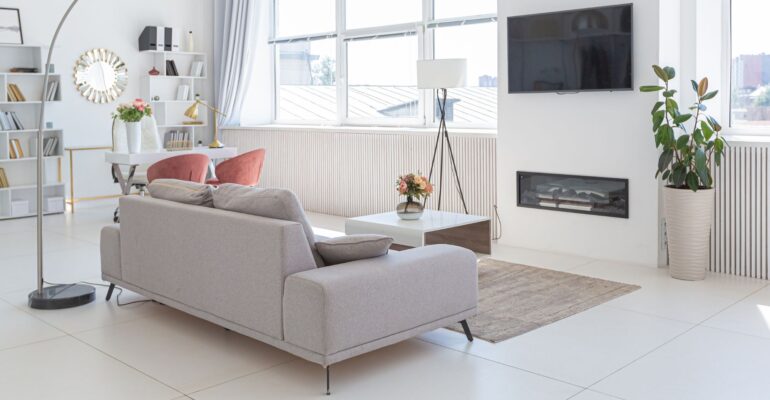The Evolution of Interior Design: From Classical to Modern
October 18, 2024 2024-10-18 10:59The Evolution of Interior Design: From Classical to Modern
At Dhruva College of Fashion Technology, we celebrate the vibrant world of interior design. Understanding its evolution empowers aspiring designers to appreciate past influences while shaping future trends. In this comprehensive exploration, we will journey through the evolution of interior design, examining its classical roots, transitions through various movements, and contemporary trends shaping our spaces today.
1. Classical Interior Design: Foundations of Elegance
Classical interior design originates from ancient civilizations, particularly Greece and Rome. This style embodies ideals of beauty, order, and harmony. Key characteristics include:
a) Symmetry and Proportion: Classical interiors emphasize symmetrical layouts, where each side mirrors the other. This balance creates harmony, reflecting the mathematical principles of beauty revered in ancient cultures.
b) Luxurious Materials: Designers use rich materials such as marble, fine wood, and elaborate textiles. These elements signify wealth and contribute to the overall opulence of a space.
c) Ornate Details: Decorative moldings, frescoes, and intricately designed furniture showcase the craftsmanship of the era. These details draw the eye and enrich the visual experience.
Classical design fulfills aesthetic needs and conveys cultural values and social status. Understanding these foundational elements is crucial for modern designers who aspire to create timeless and impactful spaces.
2. Transition to Neoclassicism
As the 18th century approached, Neoclassicism emerged as a reaction to the elaborate Rococo style. This movement revived and reinterpreted classical themes, offering a simplified and restrained approach. Key features include:
a) Clean Lines and Simplicity: Neoclassical design favors streamlined forms that convey elegance without excess. Designers focus on clarity and precision.
b) Muted Color Palettes: Soft, neutral colors replace the bold hues of Rococo, allowing for a more subtle and sophisticated aesthetic.
c) Functional Furniture: Neoclassicism emphasizes practicality alongside beauty. Furniture designs prioritize comfort and usability while maintaining refinement.
Neoclassicism sets the stage for future design movements by introducing a balance between form and function. It encourages designers to consider user experience while respecting historical influences.

3. The Rise of Modernism
The 20th century marks a radical transformation in interior design with the rise of Modernism. This movement emerges as a response to social, political, and technological changes, challenging traditional notions and embracing innovation. Key characteristics include:
a) Minimalism: Modernism advocates for simplicity and functionality, stripping away unnecessary ornamentation. The principle of “less is more” focuses on essential elements that enhance user experience.
b) Open Spaces and Fluidity: Modern design emphasizes open layouts that promote natural light and create a sense of connection between spaces. Designers minimize walls to encourage flow and interaction, fostering a welcoming atmosphere.
c) Innovative Materials: The introduction of new materials such as glass, steel, and plastics revolutionizes design possibilities. These materials allow for experimental forms and create sleek, contemporary looks.
Modernism not only redefines aesthetic values but also transforms our understanding of space and function. It encourages designers to explore new ideas and push the boundaries of traditional design.
4. Postmodernism and Eclecticism
As the century progresses, Postmodernism emerges as a reaction against the rigidity of Modernism. This movement embraces diversity, irony, and experimentation, leading to defining characteristics:
a) Eclectic Styles: Postmodern design celebrates the mixing of various elements from different periods and cultures. This blending creates unique, personalized spaces that reflect individual occupants.
b) Playful Aesthetics: Designers use bold colors, patterns, and unexpected combinations. This approach encourages creative risks and exploration of unconventional ideas, resulting in dynamic and engaging spaces.
c) Personal Expression: Postmodernism champions design that reflects personal tastes and experiences. This focus on individuality allows for greater freedom and creativity in design.
Postmodernism paves the way for a more inclusive approach to interior design, where diverse influences and personal expression take center stage.

5. Contemporary Trends in Interior Design
Today, interior design continues to evolve, reflecting global influences and technological advancements. Key contemporary trends include:
a) Sustainable Design: With growing awareness of environmental issues, sustainable practices gain prominence. Designers focus on eco-friendly materials, energy-efficient solutions, and sustainable manufacturing processes, considering the lifecycle of products and their environmental impact.
b) Smart Homes: The integration of technology into interior design transforms how we interact with our spaces. Smart home features such as automated lighting, climate control, and security systems, enhance convenience and efficiency.
c) Biophilic Design: This trend emphasizes the connection between humans and nature. By incorporating natural elements like plants, water features, and organic materials, designers create spaces that promote well-being and tranquility.
d) Multifunctional Spaces: As urban living becomes more prevalent, designers create multifunctional spaces that serve multiple purposes. This approach optimizes functionality without sacrificing style, allowing for flexibility in modern living.
e) Cultural Sensitivity: Designers increasingly recognize the importance of respecting diverse perspectives. Integrating cultural elements enhances authenticity and promotes inclusivity, creating spaces that resonate with a broader audience.
Conclusion
The evolution of interior design from classical to modern styles showcases a rich tapestry of influences, materials, and philosophies. At Dhruva College of Fashion Technology, we encourage our students to study these transitions to inspire their creative journeys. By understanding the past, aspiring designers can craft innovative spaces that resonate with today’s aesthetic and functional demands.
As you embark on your design journey, remember that the history of interior design is not just a series of styles; it reflects cultural values, technological advancements, and the ever-changing human experience. Combining historical knowledge with contemporary trends will empower you to create spaces that look good and function well, enhancing the quality of life for their occupants.
If you’re passionate about interior design and want to learn more, explore our programs at Dhruva College. Our dedicated faculty and comprehensive curriculum will equip you with the tools and insights needed to thrive in this exciting field. Let’s shape the future of design together!






